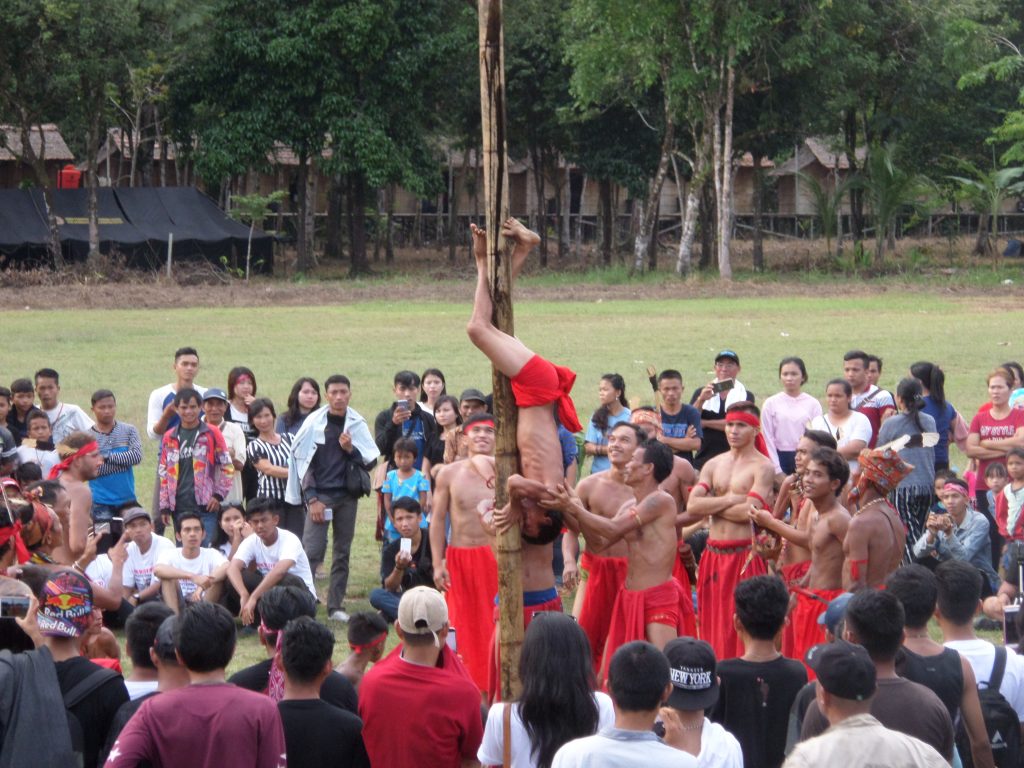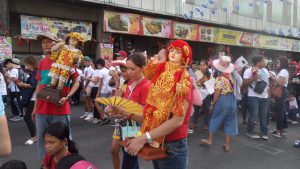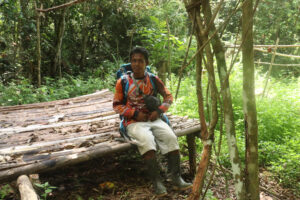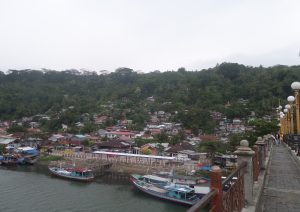This is a story of how I took part in a Gawai festival in a Bidayuh village named Sebujit in the Indonesian part of Borneo, while I was living in Kuching in Malaysia. I will tell you about some of the incredible things that I saw, and why I felt like I was in the middle of a NatGeo movie.
Gawai (or Gawai Dayak) is celebrated every year at the end of May and early June, mainly in Sarawak (Malaysia).
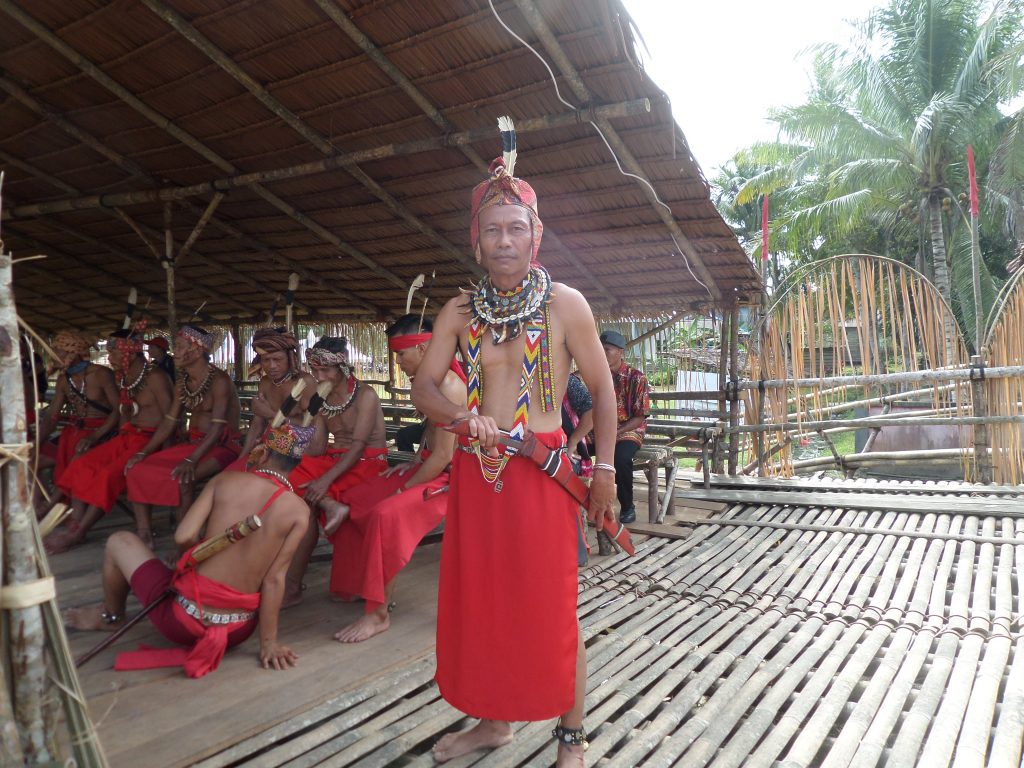
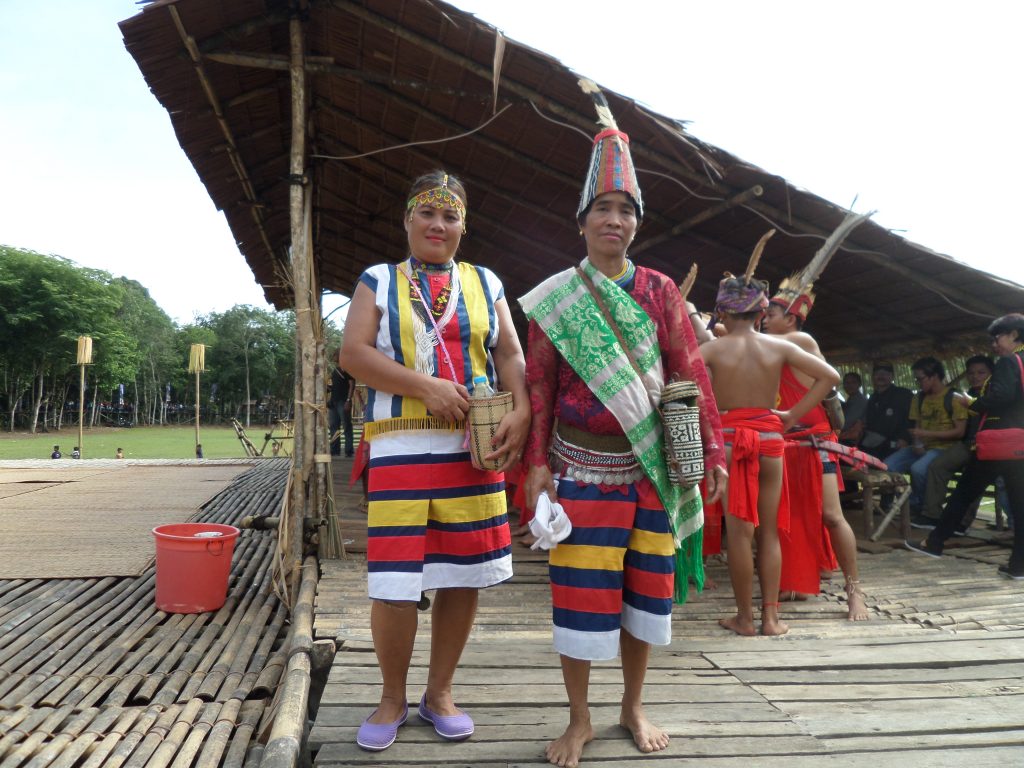
How the possibility to visit the villages found me
I was staying in an Airbnb apartment in Kuching, and one day, the owner, who lived in another apartment in the same house, said to me: I have a friend, who is organising a trip to some villages, would you like to join them? Two nights, three days, seven hundred and something ringgits. Without thinking for a moment, I said, of course I would!
And then he adds: but you should take your passport with you, because the village is in Indonesia. Really? Well, no problem. Later I also learnt from him, that we were going to cross the border near Serikin. But when I checked on the map and at various internet sources, it turned out that there is absolutely no official border crossing anywhere near Serikin. I read, however, that there is a road, which crosses the country border, but it is not an official exit/entry point, and it is mainly used by smugglers, even if there are soldiers guarding the border.
Yes, I got a little frightened. But later, I talked to the organiser himself, who said it is true, that we are not going to use an official border crossing, but he assured me that there would be no problems, and that there would be a lot of other people with us. I, being the overcautious worry-wart that I am, said to him: I will only join you if there are other European people in the group. Two days later he jokingly said to me, “I have found you two Swedish guys and an Australian girl”, so I said good!, at least I am not going to be lonely in an Indonesian prison when they lock me up for illegally crossing international borders.
But luckily, we crossed into Indonesia with no problems. There were soldiers and other guards, who took our passports and examined them, but we didn’t get any stamps in our passports, and we got them back after about 15 minutes or so.
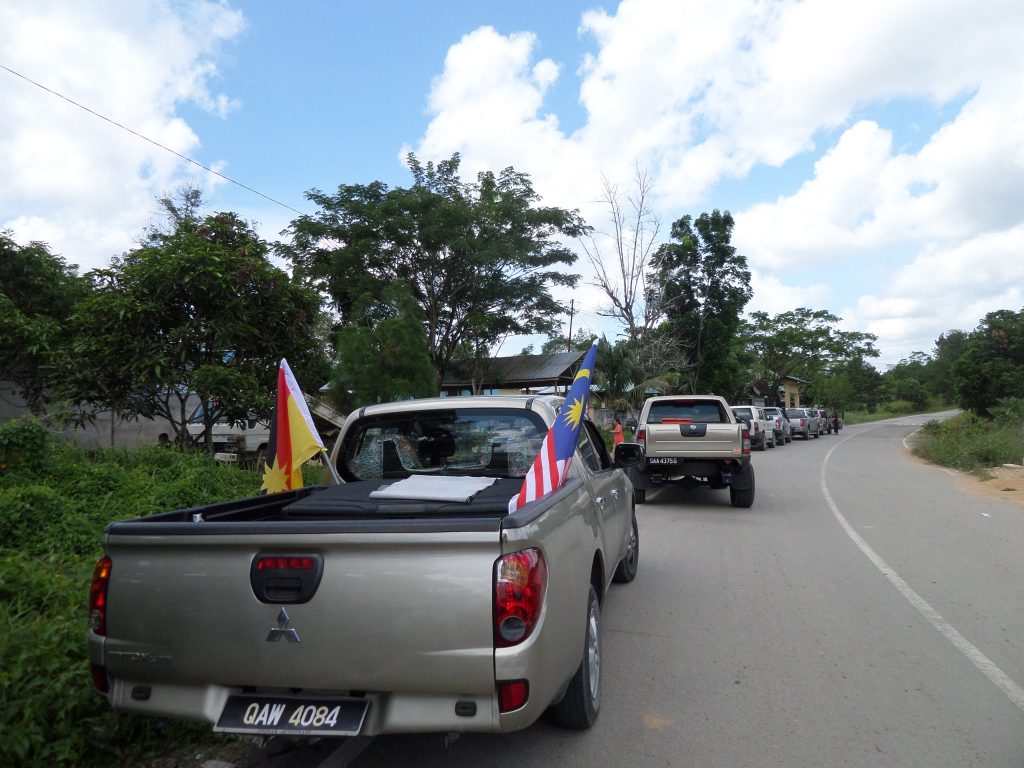
However, I do not recommend that you should do the same. We did have an official invitation letter from an Indonesian ministry, which listed all the passport numbers and names.
The Bidayuh people
The Bidayuh are a group of people living mainly on the island of Borneo. They have their own language, their own traditions and customs. According to Wikipedia, there are a little more than 200.000 Bidayuh today.
Their traditional costumes are very colourful, and one unmistakeable feature is the feathers worn mostly by men, and the bright coloured clothes worn by both sexes. Their music and musical instruments are also special.

Their most famous and most colourful festival is Gawai, originally a harvest celebration, when they also try to please the gods so that they could have plentiful harvests. You can see Dayak festivals or Gawai festivals in the large cities in Borneo, e.g. in Kuching, but to see something more authentic, yo need to venture into the tiny villages in the jungle. And that’s exactly what I did.
I visited several Bidayuh villages on two occasions. Once in Indonesia (as I described above in the introduction), and once on the Malaysian side of the border, but very near it. The two villages that I have spent several days in are Sebujit in Indonesia and Gumbang in Malaysia (see map below), but I paid a brief visit to some other villages too, on the way. This post is only about the visit to Sebujit, and you can see a photo reportage about my visit to Gumbang in another post.
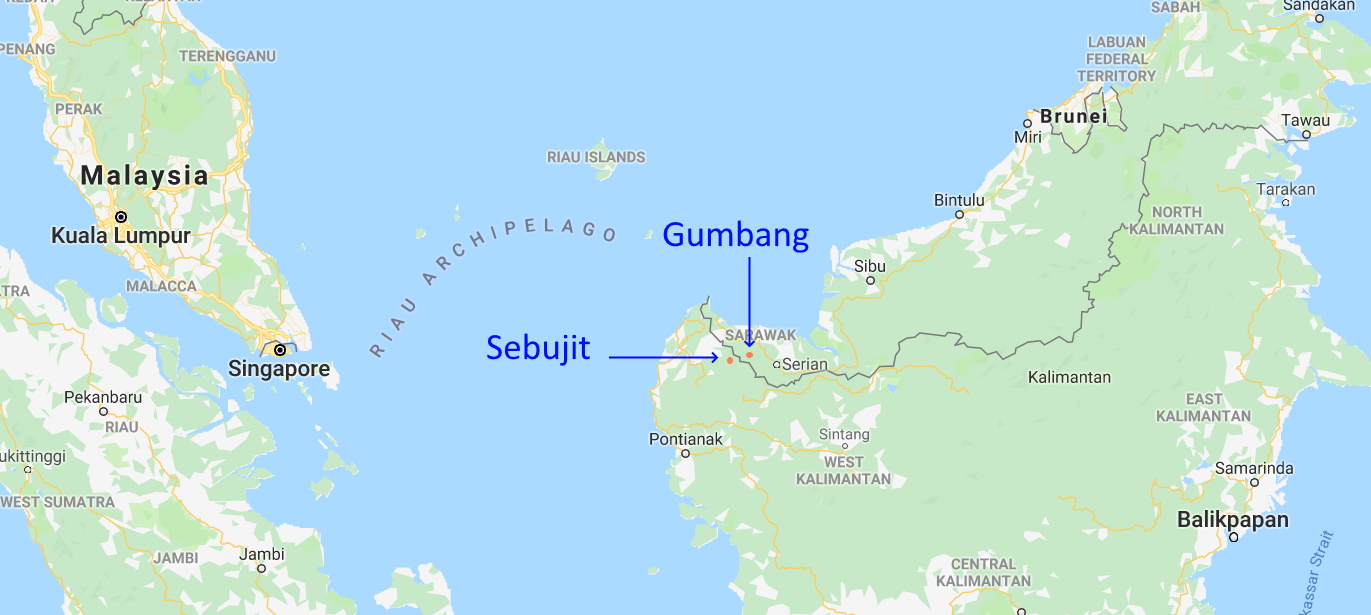
Gawai festival in Sebujit
In Sebujit, we were lucky to be able to stay in the house of the village chief himself, who was responsible for the ceremony of the village and that of his own household. There were quite a lot of us visitors, even though only 4 of us were foreigners. So accommodation was actually some free space on the floor, where we could simply lie down on whatever materials we could find.
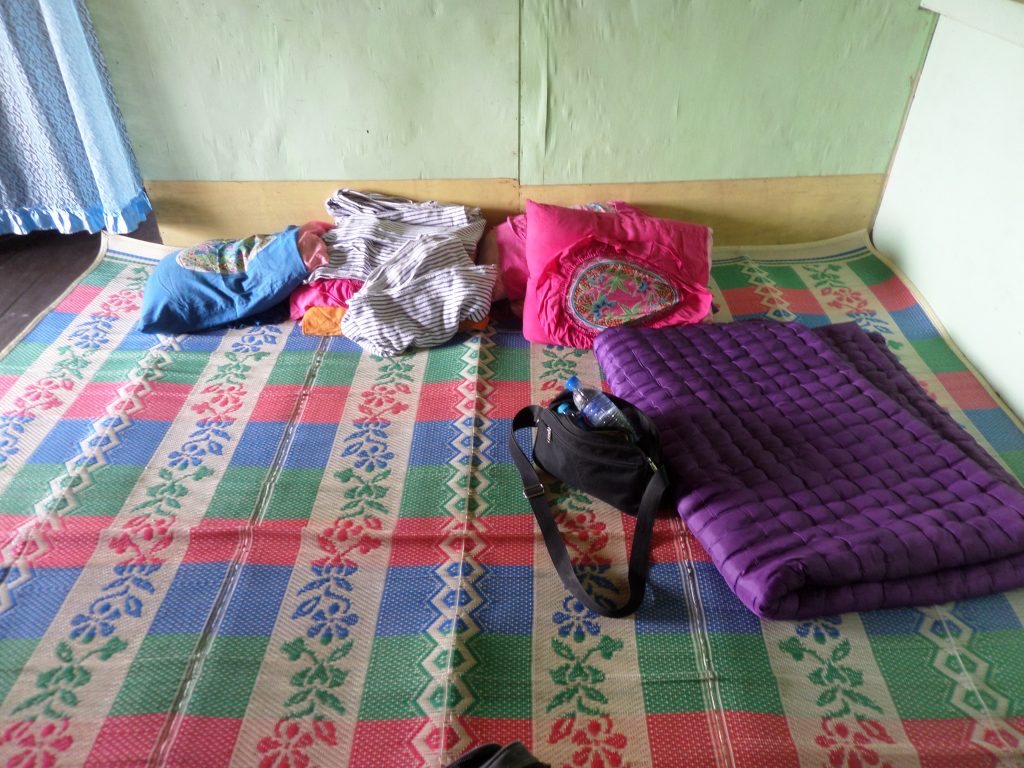

As for food, we were told by the organiser, that we should simply go into any, repeat: any of the houses in the village, and they will give us food. First, it seemed a little weird to me, but after a while, it looked almost natural. We went in, said selamat malam (good evening) or whatever greeting was appropriate, and sat down on the floor to eat together with the family. Everyone in the village was very welcoming and nice, although we could only have conversations with a few of them.

I think part of the money we paid to the organiser went to the village community somehow, and I know that at least one of the villages also got some financial support for the festival from the government.
After three days in Sebujit, the toilet and bathroom situation became a little inconvenient, since this particular house did not have a bathroom or running water, so we had to use the facilities of someone else’s house anywhere in the village. But it happened several times that I could only use an outside bathroom, and I don’t mean the toilet, but the shower: there was a barrel full of rain water, and a small bucket to splash water on yourself with. It had a sort of a “curtain” around it, but no roof, so when it started to rain, I said to myself, you are not so dirty after all… But it was great fun, and I didn’t go there to enjoy hotel facilities anyway.
The Bidayuh Gawai Festival
One important part of the celebration was sacrificing different animals to please the spirits so that they would not harm anyone in the village. In Sebujit, three animals were sacrificed, in this order: a chicken, a pig and a dog. All three can (or should) be eaten, although today, the dog does not necessarily end up on the dining table, at least that’s what we were told. Some people in the village, on the other hand, told us that dog meat is consumed sometimes, as well as monkeys, snakes and even orangutans. I was most shocked to hear that they hunt and eat the extremely endangered orangutan, too, but then who am I to judge local customs, especially as a guest welcomed by the whole village?
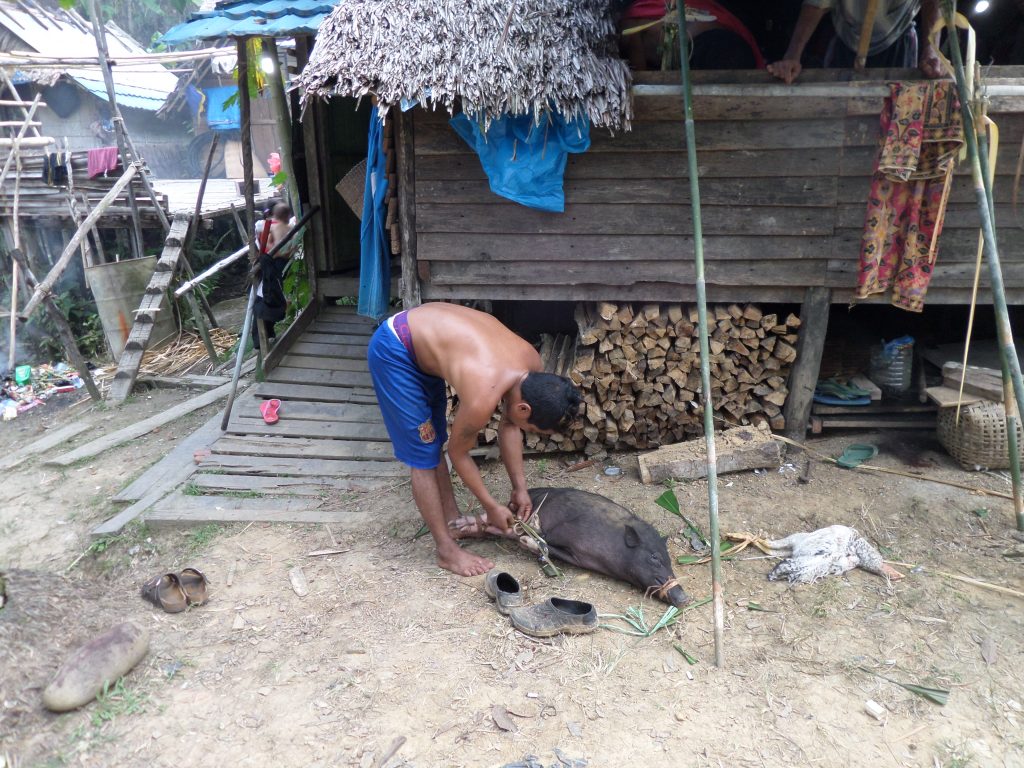
The chicken sacrifice was also interesting: a man of the house walk around with the chicken still bleeding, and he was swingin it around so that everyone, including us, visitors, should be protected from evil spirits, via the blood of this poor animal.
But the pig sacrifice was even more interesting. They brought it into the house, and placed it on the floor. It was killed by the headman, very professionally, I should say, because there was not much squealing.
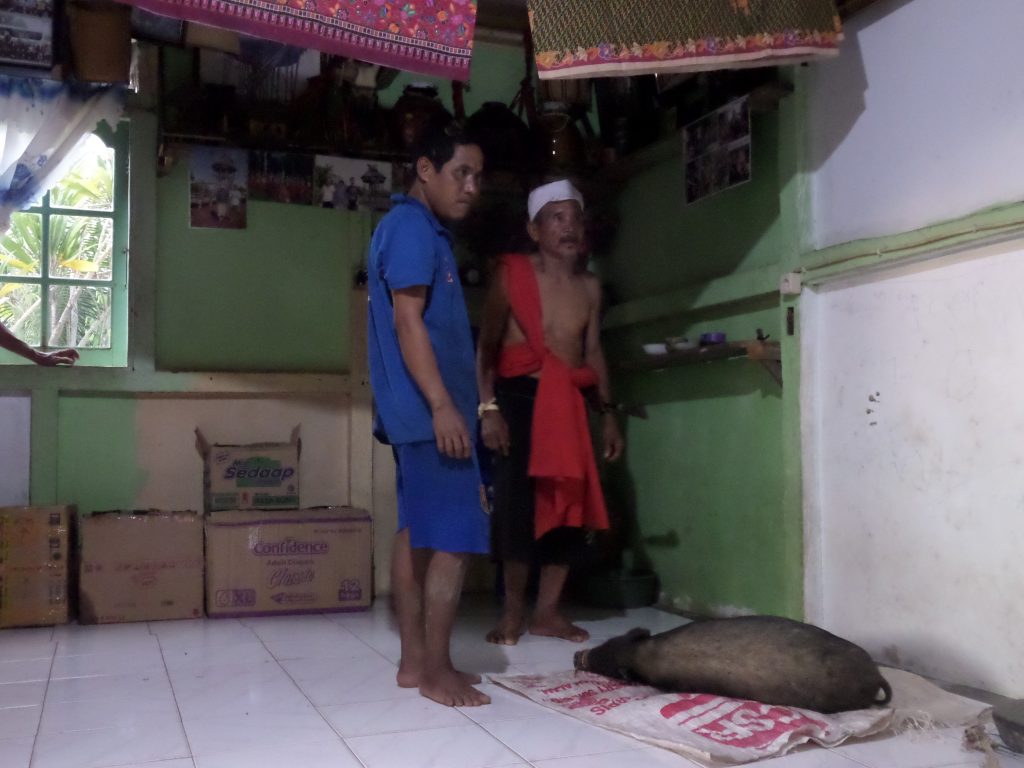
When it was killed, the chief used its blood to cleanse and to protect the house and all the family members. He smeared the pig blood on the wall of the house and on people’s faces. He also used it, I think, to heal an elderly woman’s (supposedly, his wife’s) waist and back. After he finished cleansing his family members, he started to do this service to the visitors, too, at which point I was the quickest person to run out of the house 🙂
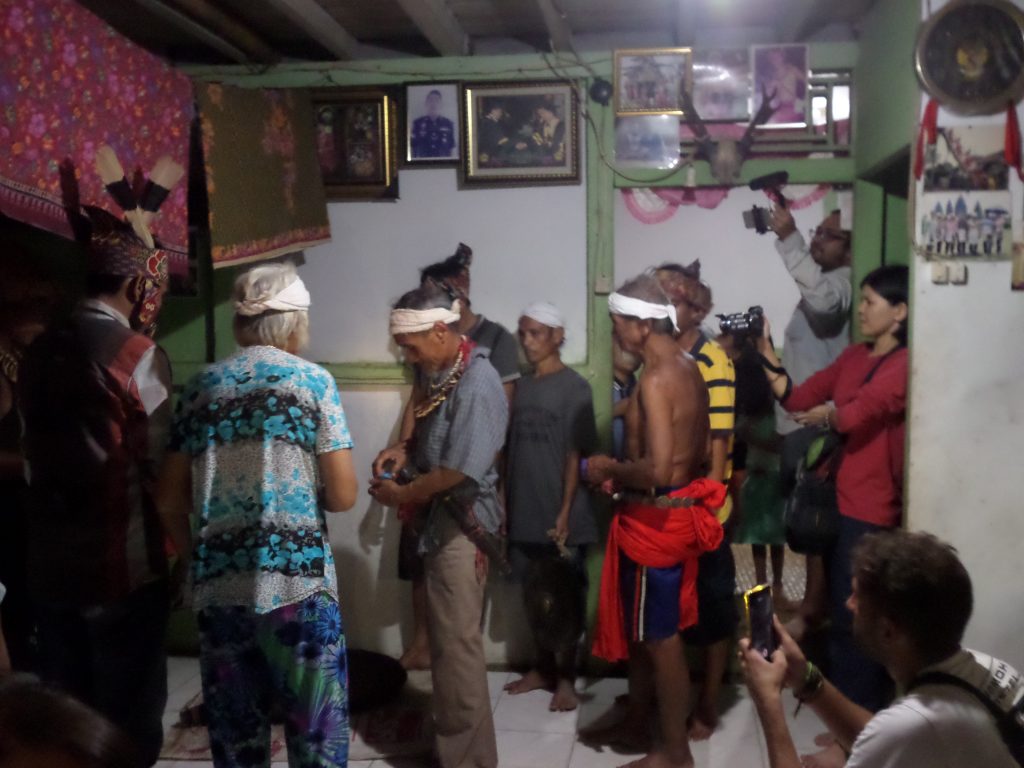


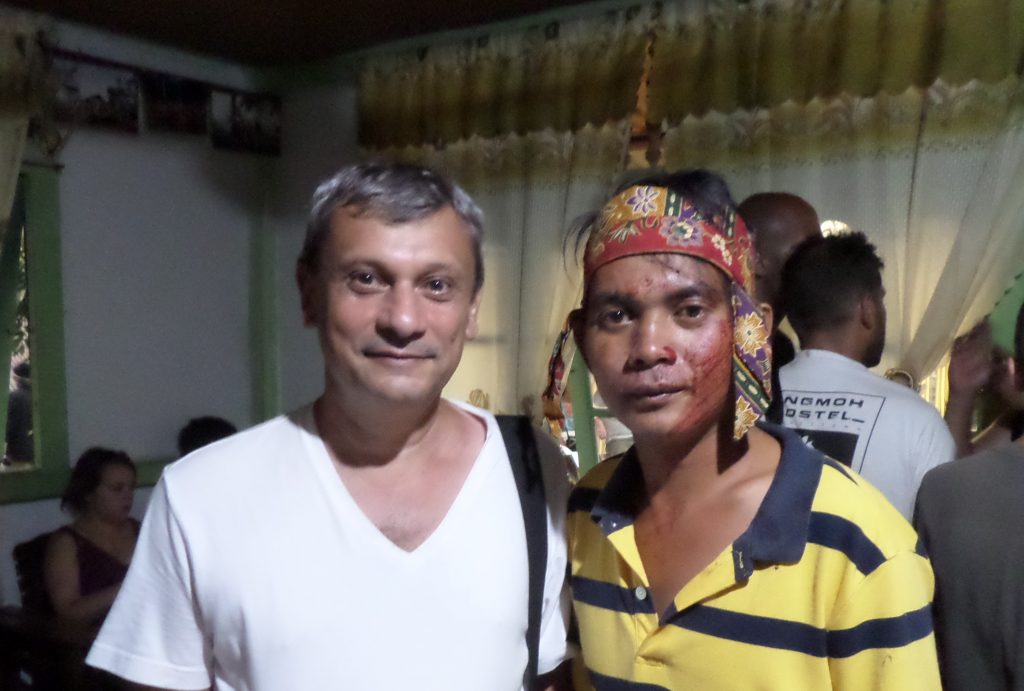
The Baruk
The Baruk is a ceremonial Bidayuh building, and every village must have one. This is the centre of action for celebrations and important events for the community. It is usually round shaped, and built on stilts, usually several metres high above ground. Originally, only adult men could enter the baruk, but now the rules are not so strict at all.
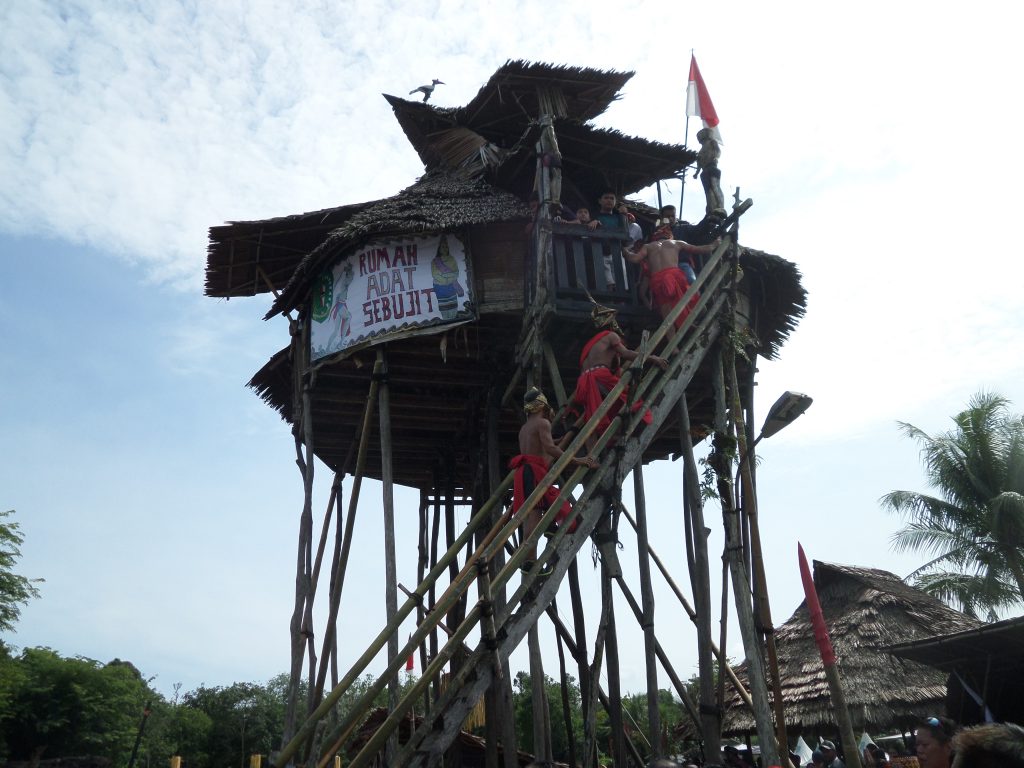
At the top of the baruk, there are drums that the men play. During the festivals, the baruk must be attended and the drums must be played continuously, day and night.
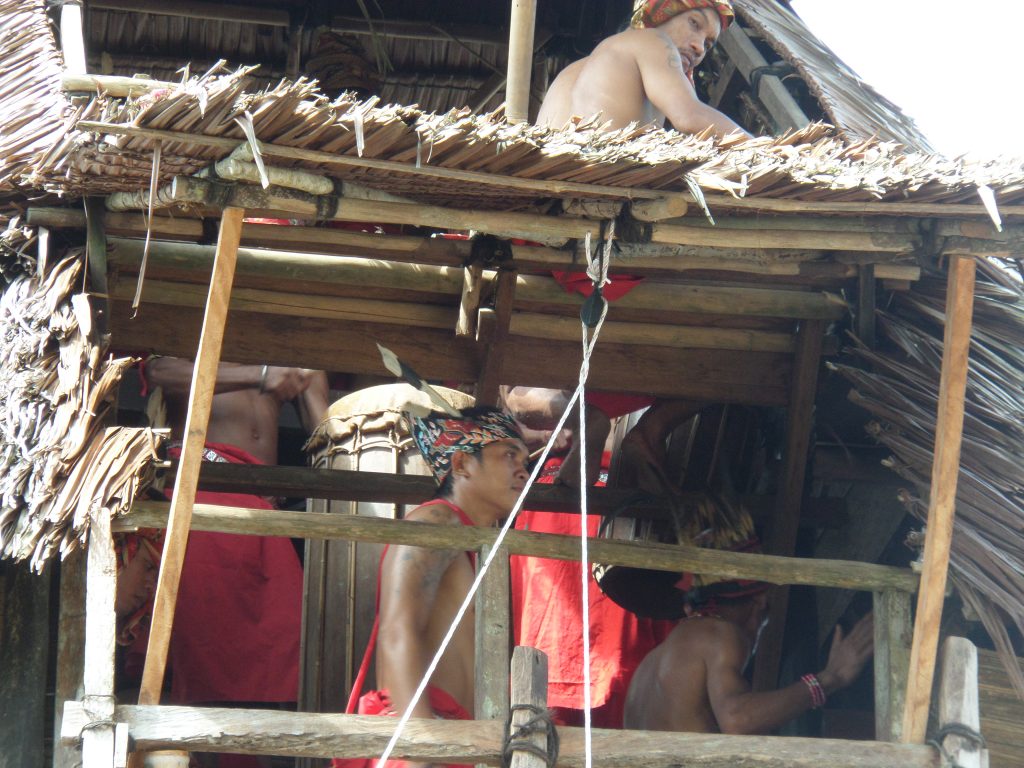
In Sebujit, there is a large open space around the baruk, built of bamboo about two metres above the ground. This serves a stage for dances and other performances during celebrations.
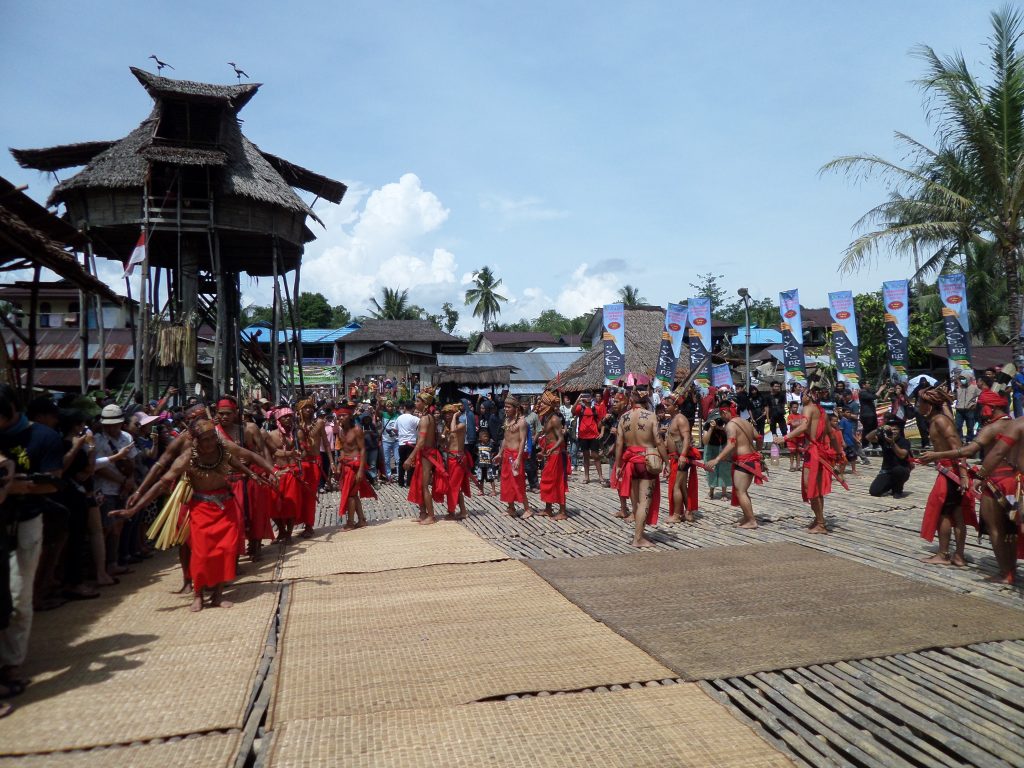
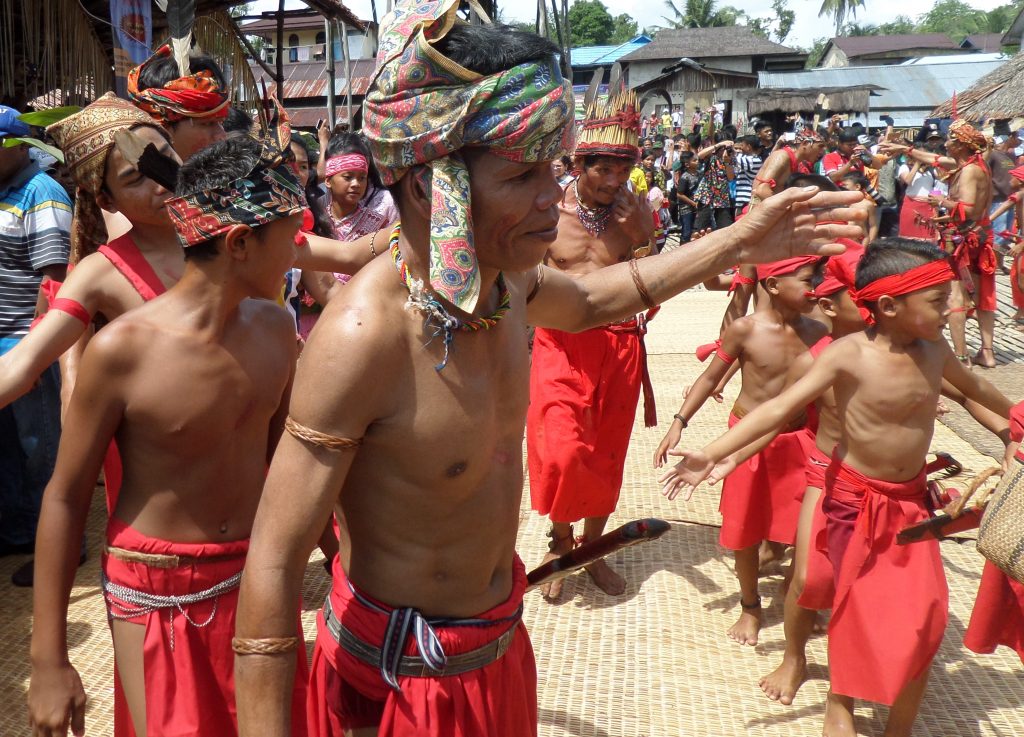
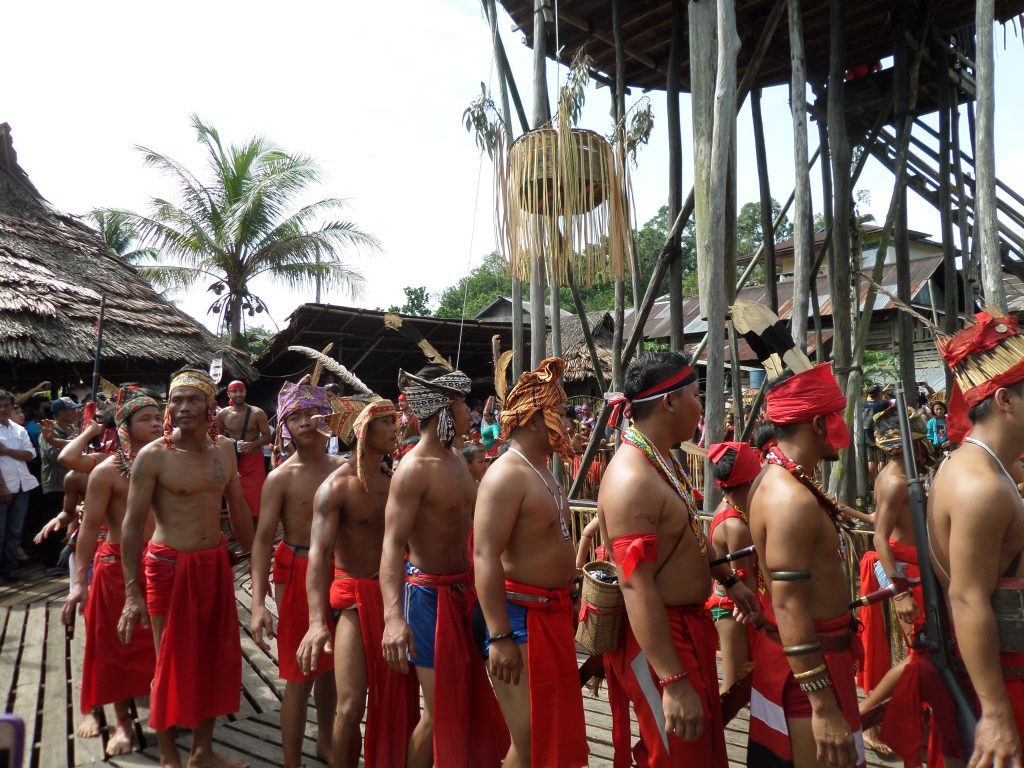
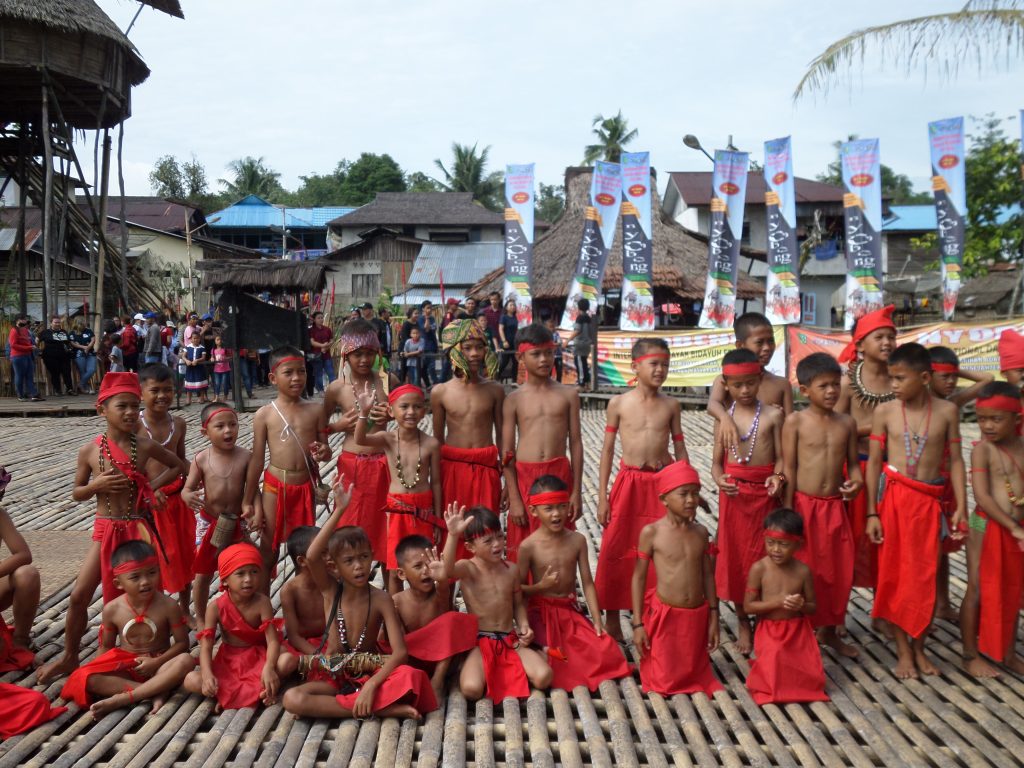
Headhunters
The Dayak/Budayuh people of Borneo used to be headhunters. They fought with neighbouring villages or communities for whatever reasons, and if they won, they beheaded some of the enemies, and brought back their heads to their own village. These skulls were then hung up in their houses, and also worn by the men. The skulls were kept from generation to generation, and they are still there to be seen in the houses and as a decoration around the neck.
Headhunting was banned as early as the nineteenth century, but there are rumours that it was still practiced well into the twentieth century. The skulls are supposed to possess supernatural powers. During the Gawai festival, in some places there is a ceremony called feeding the skull: giving food and drink to it so as to please the spirits.

Celebration programmes
The Gawai festival lasts two days, but there is a preparation day, too. During the festival, there were several programmes in Sebujit: there was a singing and dancing programme – this time not necessarily the traditional dances and songs, and I really enjoyed them. There were other programmes, including a contest where you had to climb a very tall bamboo pole, on top of which there was a basket full of presents: drinks and cigarettes for the adults, and sweets and chocolate for the children.
